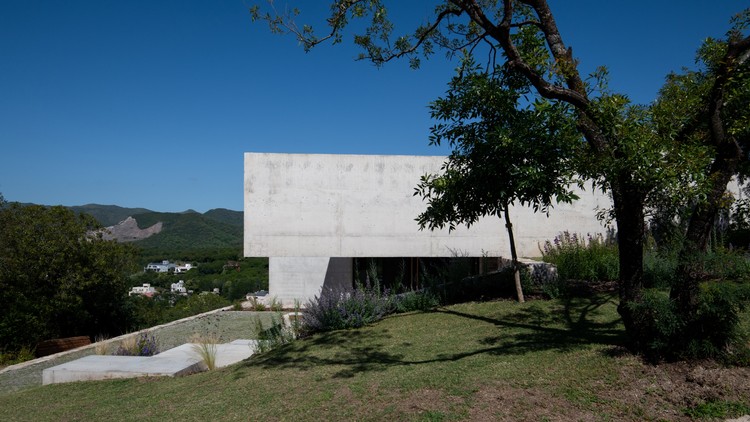Yu Hotel Shanghai Benzhe Architecture Design
2018-06-07 00:00
架构师提供的文本描述。该项目位于中国上海复兴东路,紧邻于花园,被命名为“宇大酒店”,与玉园相呼应。它原来是一家古老的旅店/国际象棋。
Text description provided by the architects. The project is located on East Fuxing Road, Shanghai, China, which is next to Yu Garden, thus is named “Yu Hotel” to echo with Yu Garden. It was originally an old hostel/chess & card room. With the changes of times and urban renewal, the owner wanted to deconstruct the new meaning of B&B on the basis of reinforcing the existing structure.
Entrance. Image © SCHRAN Architectural Photography, Xuanmin Jin
老旅舍由四座狭窄的老建筑组成,里面光线不足。改造工程的关键是空间重组,将阳光和自然带入原本狭小而黑暗的室内空间。经过半年多的时间,设计师已经解构,并将旧的地方变成了建筑群,其内部与外部相连接,与中间的庭院相隔。
The old hostel was comprised of four old buildings that were narrow, small with inadequate lighting on the inside. The key of the renovation project is spatial restructuring and bringing sunlight and nature to the interior space that used to be narrow and dark to begin with. After more than half a year, the designers have deconstructed and turned the old place into the complex whose interior is connected with the exterior with courtyard interspaced inbetween.
Café. Image © SCHRAN Architectural Photography, Xuanmin Jin
改造后的宇大酒店由两座建筑物组成。在设计过程中,对文化、自然和建筑三者之间的关系进行了梳理,以期将它们整合在一起。入口处是用黑色砖块建造的环形墙,作为空间开放和隐私之间的过渡。通过借鉴上海北部四合院住宅和四合院的特点,设计师采取了大胆的措施,在土地稀缺和昂贵的上海市中心挤出一座院子,设法把过去彼此隔绝的建筑整合在一起,使客房、大堂和咖啡厅在远处相互呼应。庭院的引入充分体现了传统建筑中的园林理念。
The renovated Yu Hotel consists of two buildings. The relations among culture, nature and architecture were sorted out during the design process for the purpose of integrating them together. At the entrance is the roundabout wall built with black bricks that serves as transition between the openness and privacy of the space. By referencing to the characteristics of quadrangle dwellings in the north and courtyards of Shanghai, the designer took bold steps to squeeze out a yard in the center of Shanghai where land is scarce and expensive, managed to bring the buildings that used to be isolated from each other together and made the guest rooms, lobby and café visually echo with one another at a distance. Introduction of yard has fully reflected the idea of gardening in traditional buildings.
客房位于朝南的主楼.建筑内部空间的不同功能布置巧妙,如手套般贴合。中庭将走廊、露台和后院的空间完美地结合在一起,以达到最大限度的视野和空间开放。玻璃天窗确保了客房的公共区域充满了光线,这完全改变了以前昏暗的旧房间。楼梯由铜和实木组成,起到连接楼上和楼下楼层的作用。阳光透过天窗照射到楼梯上方的白色墙壁上,并通过中庭的高架玻璃小径击中楼下的水磨石地面,整个空间变成了一个非常明亮的整体。
The guest rooms are in the south-facing main building. The different functions of the space inside the building are cleverly arranged and fit like a glove. The atrium perfectly brings the space in the corridor, terrace and the backyard together to achieve maximum openness of sight and space. The glass skylight ensures that the common area in the guest room is filled with light, which has totally changed the old rooms that used to be dim and shadowy. The staircase made of copper and solid wood serves the role of connecting the floors upstairs and downstairs. With the sunlight shining through the skylight, onto the white walls above stairs and hitting the terrazzo floor downstairs through the elevated glass trail in the atrium, the entire space becomes a coherent whose that’s very bright.
Atrium. Image © SCHRAN Architectural Photography, Xuanmin Jin
The designers believe that the highlight of B&B is its details, aka what has been described as recognizing the whole through observation of the part. The beauty of Yu Hotel is reflected in the thought it has put into the place and the attention it has paid to details. Having a complete and independent aesthetic concept of their own, the designers even picked out the bibelots themselves. To see a world in a flower and a bodhi in a leaf, only designers with a sense of poetry will give all twelve guest rooms their own names: Chun, Yuan, Lan, Run, You, Han, Dan, Chan, Fu, Tian, Man and Zi. Every room has its own style and story. With such meaningful names, the designers were able to create something with such tender yet tough beauty and charm of the east. As soon as it touches your soul, it’s hard to pull away.
Loft guest room. Image © SCHRAN Architectural Photography, Xuanmin Jin
As the rigid demand and highlight of urban B&B, two large loft spring-layer rooms called “Run” and “Lan” were built in Yu Hotel. Having taken advantages of the upper space, the two 55m2 rooms are divided into two floors to leave enough room downstairs for various facilities: e.g. open bathing space, recreational reception area, etc. The space upstairs is the rest area so as to separate the places for work, recreation and rest apart to ensure guests’ privacy.
Loft guest room. Image © SCHRAN Architectural Photography, Xuanmin Jin
房间“春”的主要色调是新中式风格。它有“春”这个名字,因为它简单明了。房间里巨大的法式窗户让你可以在安静的环境中看到绿色的小世界,而不会打扰院子里的生物。就在这个地方,就在拥挤的市区里。
The main tone of Room “Chun” is neo-Chinese style. It got the name “Chun” for it’s plain and simple. The large French window in the room allows you to see the small, green world in peace without disturbing the living creatures in the yard. It’s a place that’s right next to yet hidden in the crowded downtown.
在新中国风格的设计过程中,采用简化的手法来展示中国传统文化的内涵。古代的“镜子”是用青铜或铁制成的。现代设计师喜欢把没有被加工过的铜和圆镜面结合起来。创造高质量的生活需要一个人。简单的梳妆台与大陶瓷浴缸相遇,木头与铁相遇,厚实的铜镜与玻璃窗相接,现代设施设计独具特色,这就是于大酒店的意义所在。
During the design process of neo-Chinese style, technique of simplification was employed to show the connotation of traditional Chinese culture. “Mirrors” in ancient times were made of bronze or iron. Designers in modern times like to combine copper that has not been over processed with round mirror plane. It takes one to create a life of quality. A place where simple dressing table meets big ceramic bathtub, wood meets iron, chunky bronze mirror meets glazed glass windows and modern facilities meet unique design, this is what Yu Hotel is all about.
guest room_chun. Image © SCHRAN Architectural Photography, Xuanmin Jin
 举报
举报
别默默的看了,快登录帮我评论一下吧!:)
注册
登录
更多评论
相关文章
-

描边风设计中,最容易犯的8种问题分析
2018年走过了四分之一,LOGO设计趋势也清晰了LOGO设计
-

描边风设计中,最容易犯的8种问题分析
2018年走过了四分之一,LOGO设计趋势也清晰了LOGO设计
-

描边风设计中,最容易犯的8种问题分析
2018年走过了四分之一,LOGO设计趋势也清晰了LOGO设计






.jpg)



.jpg)











.jpg)



.jpg)



.jpg)

.jpg)

.jpg)



.jpg)







.jpg)















.jpg)







.jpg)



























